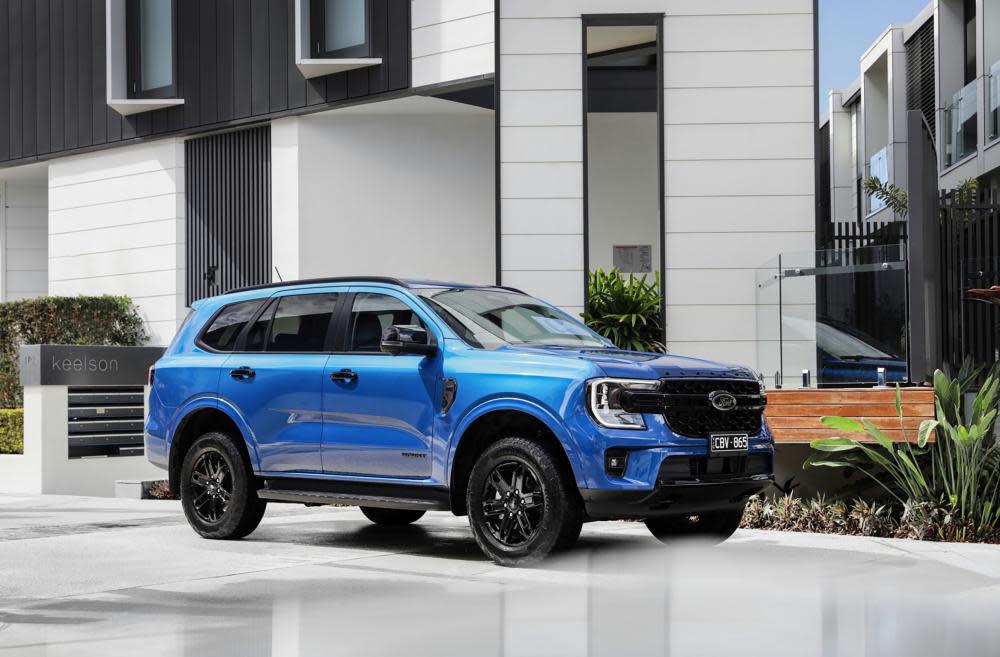SUVs are more popular than ever in Australia – but there is a downside

SUVs are everywhere in Australia. More than 50% of new vehicles sold in the country last year were SUVs, a share that has almost doubled over the past decade. In a survey, more than 40% of Australians who owned a car manufactured since 2021 had an SUV.
So why are SUVs getting more popular? There are a number of factors, including better visibility and ease of getting in and out of cars. Regulations in countries like the US may also encourage manufacturers to create more SUVs.
Related: Australians are in love with big polluting cars – here are some alternatives
Tony Weber, the chief executive of the Federal Chamber of Automotive Industries, points out that larger vehicles are more flexible, able to “do the grocery run, carry the tools and tow the boat on the weekend”.
But the increasing number of larger cars could be problematic, in part due to increased risks to pedestrians and other drivers.
Sign up for Guardian Australia’s free morning and afternoon email newsletters for your daily news roundup
“If you go from a medium SUV to a large SUV … you’re actually increasing the risk of serious injury to other road users by about another third,” says Prof Stuart Newstead of the Monash University Accident Research Centre. “They’re actually the worst class of vehicle for being run into.”
Peer-reviewed American studies have also found larger cars are disproportionately likely to injure and kill pedestrians and may be partly responsible for increases in pedestrian crash deaths.
SUVs are so popular that the category is now commonly split into five – from “light” SUVs, such as the Toyota Yaris Cross, to “upper large” ones, including the Toyota LandCruiser. The Ford Everest – a “large” SUV – won Wheels car of the year, an Australian automotive award.
Two-thirds of new vehicle sales in Australia last year were SUVs, 4WDs or light commercial vehicles – a category that includes utes. These categories also accounted for eight of the top 10 bestselling models in 2022, according to Federal Chamber of Automotive Industries data.
“SUV and light commercial vehicle sales have risen from 45.3% of total vehicle sales in 2012 to 76.8% in 2022,” Weber says. “The highest-selling vehicle in Australia each year since 2016 has been a ute.”
A decade ago the top-selling vehicle was the Toyota Corolla. The Corolla still makes the top 10 but other sedans and hatchbacks, including the Holden Commodore, the Ford Falcon and the Mazda 3 are long gone.
They have been replaced by a wide range of 4WDs, SUVs and utes. Just two of the top 10 bestselling cars in 2022 don’t fit into these categories.
Four of the top 10 bestselling models last year were utes, possibly in part due to tax breaks available for business owners. The Ford Ranger – which won a different car of the year award this year – was the second most popular vehicle in 2022. The Toyota HiLux, another ute, was the most popular.
But the increasing size of larger cars leads to a much bigger gap in weight between SUVs and other cars or pedestrians, Newstead says.
“So the [Ford] Everest is a very big car, well over two tonnes. Built on a ladder chassis, like the Ford Ranger. And those cars typically aren’t great when they run into other things.

“Those cars are typically problematic for unprotected road users, like pedestrians, because not only are they quite high and stuff, but when they do hit a pedestrian they’ll tend to drive over the top of them rather than [the pedestrian going] over the bonnet, because they are so tall.”
Technological improvements like automated breaking and roll stability control have improved safety in other areas for bigger cars. But larger cars continue to be overrepresented in “back over” crashes, when a person is struck by a reversing vehicle. Ongoing research at the Accident Research Centre found similar-sized cars as the Everest were “not that much better” at protecting passengers than medium-sized SUVs like the Mazda CX-5, which are about 500kg lighter.
A 2022 survey of car buyers by the insurer Budget Direct suggests the popularity is being driven by particular age groups. Just 9.5% of cars owned by 18- to 24-year-olds are SUVs (sedans and hatchbacks were more than 80%), but they are 36% of cars owned by 35- to 44-year-olds.

 Yahoo News
Yahoo News 
